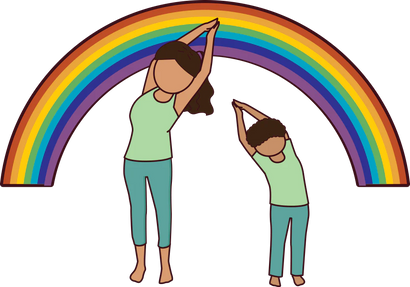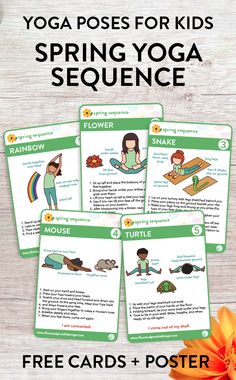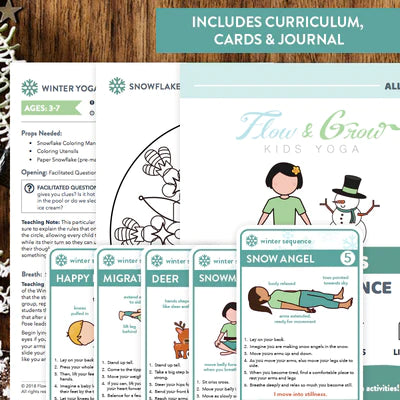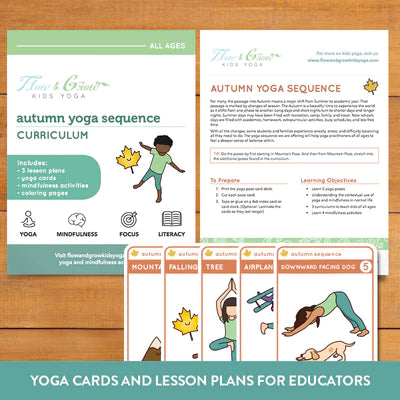Your Cart is Empty
22% off Automatically at checkout when you spend $5 of more!
22% off Automatically at checkout when you spend $5 of more!

Teaching Gratitude with Yoga and Mindfulness
by Lara Hocheiser November 18, 2019 2 min read
There’s more science than ever showing gratitude mindsets help people live happier, healthier lives.
Learning gratitude doesn’t happen overnight, it’s a behavior that can be taught and reinforced over time. Teaching kids about gratitude requires them to observe from an outside lens. In doing so, they can learn to form healthy relationships with themselves and others.
So, how do we introduce gratitude to children?
Gratitude can be experienced through direct experience, through dramatization, and through adult modeling. Try these ways to practice gratitude with your little ones:
Talk about gratitude
Use the dinner table to talk about gratitude.
- Discuss ‘what is gratitude?’ It’s not just saying ‘thank you’... it’s about having a deeper appreciation for the things you are thankful for.
- Name a few things you are grateful for.
- Talk about ways to express gratitude other than saying ‘thank you’, such as doing a kind gesture, writing a card, helping out a friend, etc.
Practice yoga and mindfulness
Yoga teaches us to be grateful for our health and bodies. Use our yoga cards and mindfulness activities found in our Gratitude Yoga Cards.
We created this resource filled with games, meditations, activities, crafts, and yoga poses to help get in touch with a sense of gratitude.
Illustrator Note: I have always been grateful for creative expression and I like to model that in our resources. Kids benefit from having a creative outlet, so many of the activities found in this packet enable kids to express themselves while learning about important themes, such as gratitude and kindness. Kids can express gratitude through words, drawing, coloring and thought.
Read a book
Share a book with a loved one about gratitude. After reading, ask questions thematic questions about gratitude.
Some books we love:
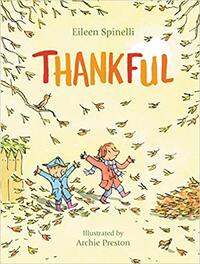
|
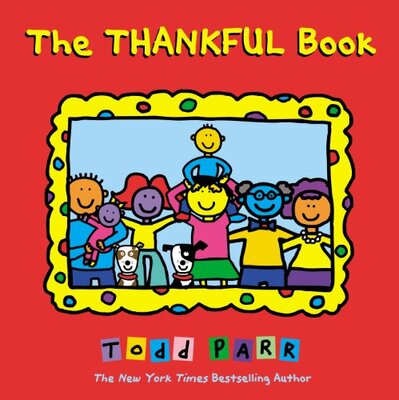 |
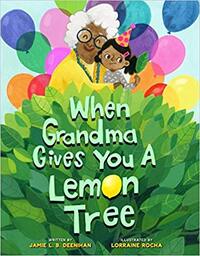 |
Start a Gratitude Journal

Every day, write down one thing that you were thankful for! It can be a person, thing, or event from the day.
We created a free printable gratitude worksheet that kids can use to write and draw what they are thankful for. Invite kids to practice gratitude with this free download. This is a great activity for the Thanksgiving holiday!
Download our FREE Gratitude Worksheet!
Leave a comment
Comments will be approved before showing up.
Also in Kids Yoga Blog
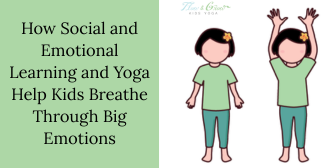
How Social and Emotional Learning and Yoga Help Kids Breathe Through Big Emotions
by Kane SEO April 21, 2025 4 min read
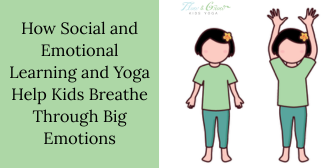
How Social and Emotional Learning and Yoga Help Kids Breathe Through Big Emotions
by Kane SEO April 14, 2025 4 min read
In classrooms and communities around the world, educators and parents alike are placing a growing emphasis onsocial and emotional learning. And for good reason: helping children understand, manage, and express their emotions in healthy ways is just as critical as teaching them to read or do math.

Power of Yoga for Kids: How It Helps Them Grow, Focus, and Thrive
by Kane SEO March 25, 2025 5 min read
In today’s fast-paced world, children are often exposed to stressors from a young age, whether it’s academic pressure, social challenges, or the overwhelming influence of digital devices. This can impact their physical, mental, and emotional well-being.
Ultimate Kids Year of Yoga Bundle
bundlespricey-contentdigital-resourcesearly-childhood-yoga-mindfulnesselementary-yoga-mindfulnesskids-yoga-resourcesmiddle-high-school-yoga-mindfulnessseasonal-yogayoga-cards
Ultimate Kids Year of Yoga Bundle
5 reviews
5.0 / 5.0
(5) 5 total reviews
$45.00
Ultimate Kids Year of Yoga Bundle
5 reviews
5.0 / 5.0
(5) 5 total reviews
$45.00
Kid’s Sun Salutation Yoga Cards
digital-resourcesearly-childhood-yoga-mindfulnesselementary-yoga-mindfulnesskids-yoga-resourcesliteracyunder-15yoga-cards
Kid’s Sun Salutation Yoga Cards
3 reviews
4.33 / 5.0
(3) 3 total reviews
$10.00
Kid’s Sun Salutation Yoga Cards
3 reviews
4.33 / 5.0
(3) 3 total reviews
$10.00
Yamas and Niyamas: Successful Relationships with Self & Others (tweens and teens)
pricey-contentdigital-resourceskids-yoga-resourceslesson-plansmiddle-high-school-yoga-mindfulnessmindfulness
Yamas and Niyamas: Successful Relationships with Self & Others (tweens and teens)
2 reviews
5.0 / 5.0
(2) 2 total reviews
$49.00$55.00
Yamas and Niyamas: Successful Relationships with Self & Others (tweens and teens)
2 reviews
5.0 / 5.0
(2) 2 total reviews
$49.00$55.00
